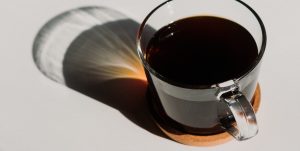If you love coffee, you probably know what a coffee filter looks like. You’ve probably seen them in your local market, too. Have you ever wondered what the difference between white and brown coffee filters is, or which ones produce the best tasting cup of joe?
What Is the Difference Between White and Brown Coffee Filters?
The most obvious difference between white and brown coffee filters is their color. Though there’s more to it than that—they also differ in how they are processed. White filters are made from bleached paper pulp, while brown ones come from unbleached paper pulp. This isn’t just an aesthetic choice; it also affects the taste of your coffee.
Brown filters undergo less processing than white ones, so they retain more of their natural flavor. The bleaching process involves removing lignin from wood pulp to make paper white, resulting in a loss of flavor compounds.

Other Differences Between the Two Types of Filters
The size of the holes in a coffee filter is another difference between white and brown filters.
Brown filters are thicker than white ones because they don’t need to be bleached as much to make them white.
This means they might not let as much flavor into your cup as a thin white filter would—though they’re sturdier and less likely to break down during use.
Sustainability
White filters impact the environment because of their chlorine treatment process. Based on a study conducted in 2012, pulp and paper mill discharges from chlorine bleaching were “the biggest environmental concern.”
Chlorine has been linked to health problems like asthma and cancer when released into the air through industrial processes or manufacturing plants that use it as part of their manufacturing process or as a disinfectant.
Taste
The bleaching process of white filters removes the natural brown color, leaving behind a white paper that’s less porous than brown paper and therefore allows for better filtration and doesn’t impart any off-flavors into the final brew.
This is especially important when you’re making pour-over and drip coffee, as even slight impurities can ruin the taste of your brew. Brown filters are made from unbleached paper, leaving a papery taste behind in a brew.
Ways of Removing the Papery Taste From Your Filters
The taste of paper is very common in coffee. This happens when your filters are not properly cleaned.
Rinse the Filter and Dry It Before Using It
This will help reduce any papery or cardboard taste that might have been left behind in the paper. If you like, you can use hot water for this step, though cold water works just as well. To do this, follow these steps:
- Put your filter into the brewing apparatus
- Pour hot water on the filter
- Discard the water
- If needed, repeat the rinsing process
- Keep brewing your coffee
Use Good-Quality Coffee Filters
You want your coffee filter to absorb the oils and flavors from your coffee without letting anything into your cup of joe. Use only high-quality filters to ensure you get the best possible results every time!

What to Do With the Used Coffee Filters
You might be surprised to learn that there are many ways to use coffee filters other than for brewing coffee. The average consumer uses only a tiny portion of their coffee filter’s life.
Save Them for Later
If you don’t want to throw away your used coffee filter, save it and reuse it later! You can use them as pot holders when serving hot dishes or napkins if your dish runs dry during dinner.
Use Them as Napkins
A lot of people don’t realize this; filters make great napkins! They’re absorbent enough that they can soak up any spills or drips on your countertops or table tops without leaving behind any lint or debris that might get caught in other types of paper towels or napkins.
Use Them as DIY Air Freshener
The oils from your coffee will help keep your home smelling fresh for hours! Just soak the used filter in water for about 15 minutes. Then place it in an airtight container and leave it overnight or until all the liquid has been absorbed into the filter. Ensure you change the water daily to keep your home smelling great!
Related Questions
Why Are Brown Coffee Filters More Expensive?
Brown filters are more expensive than their white counterparts because they are considered organic. People will pay more for products if they’re considered organic or natural or think they’re better for their health than white filters.
What Do White and Brown Coffee Filters Have in Common?
Both white and brown filters have this in common: they are used for the same purpose, filtering coffee. Both are also made from paper.
Conclusion
The difference between white and brown filters is that the former is bleached and leaves no cardboard aftertaste. In contrast, the latter leaves a papery taste in a brew and is more expensive and environmentally friendly than white filters.




